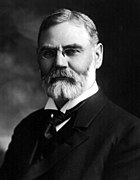| ||||||||||||||||||||||||||||||||||||||||||||||||||||||||||||||||||||||||||||||||||||||||||
All 435 seats in the United States House of Representatives 218 seats needed for a majority | ||||||||||||||||||||||||||||||||||||||||||||||||||||||||||||||||||||||||||||||||||||||||||
|---|---|---|---|---|---|---|---|---|---|---|---|---|---|---|---|---|---|---|---|---|---|---|---|---|---|---|---|---|---|---|---|---|---|---|---|---|---|---|---|---|---|---|---|---|---|---|---|---|---|---|---|---|---|---|---|---|---|---|---|---|---|---|---|---|---|---|---|---|---|---|---|---|---|---|---|---|---|---|---|---|---|---|---|---|---|---|---|---|---|---|
| ||||||||||||||||||||||||||||||||||||||||||||||||||||||||||||||||||||||||||||||||||||||||||
 Results: Democratic hold Democratic gain Republican hold Republican gain Progressive hold Progressive gain Prohibition hold Socialist hold | ||||||||||||||||||||||||||||||||||||||||||||||||||||||||||||||||||||||||||||||||||||||||||
| ||||||||||||||||||||||||||||||||||||||||||||||||||||||||||||||||||||||||||||||||||||||||||
1916 United States House of Representatives elections were elections for the United States House of Representatives to elect members to serve in the 65th United States Congress. They were held for the most part on November 7, 1916, while Maine held theirs on September 11. They coincided with the re-election of President Woodrow Wilson.
Wilson eked out a narrow re-election, but his Democratic Party lost seats to the Republican Party. Wilson's hybrid approach, which injected a progressive element into Democratic policies, had proved to be dissatisfying to much of the nation. International affairs also became important in the traditionally non-interventionist United States, as voters attempted to determine which party would be best served to keep the nation from entering The Great War.
Republicans won a plurality of seats in the 1916 election. However, when the 65th Congress convened in April 1917, the Democrats narrowly maintained control of the House, forming an alliance with third-party (Progressive and Socialist) members. Not since the 34th Congress (1855–1857) had the party with the most seats not been part of the ruling government. This Congress is the last example to date of a type of coalition holding power in the House, rather than a single party winning a majority of seats. This was also the last time that no party in the house held an overall majority
Jeannette Rankin, a Republican from Montana, became the first woman ever elected to congress.
Cite error: There are <ref group=lower-alpha> tags or {{efn}} templates on this page, but the references will not show without a {{reflist|group=lower-alpha}} template or {{notelist}} template (see the help page).
© MMXXIII Rich X Search. We shall prevail. All rights reserved. Rich X Search


